3.2.5 macroeconomic equilibrium/correction policies
1/7
There's no tags or description
Looks like no tags are added yet.
Name | Mastery | Learn | Test | Matching | Spaced |
|---|
No study sessions yet.
8 Terms
short run equilibrium diagram
- According to classical theory, this economy is in short run equilibrium at AP1Y1
- Any changes to the components of AD will cause the AD curve to shift left or right creating a new short-run equilibrium
- Any changes to the non-price determinants of SRAS will shift the SRAS curve left or right creating a new short-run equilibrium
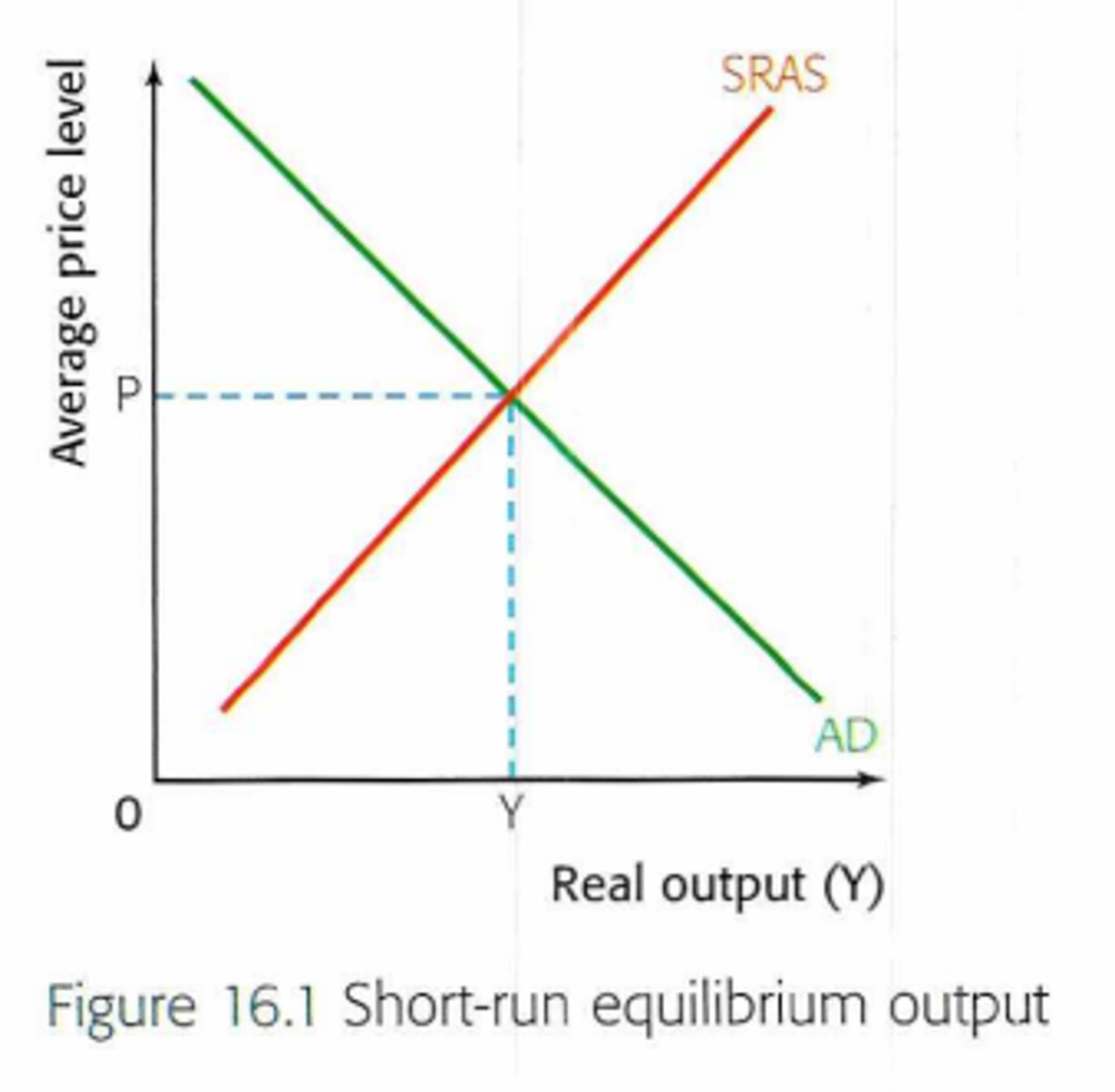
long run equilibrium (classical model)
- The LRAS curve demonstrates the maximum possible output of an economy using all of its scarce resources
- The SRAS intersects with AD at the LRAS curve
- This economy is producing at the full employment level of output (YFE)
- The average price level at YFE is AP1
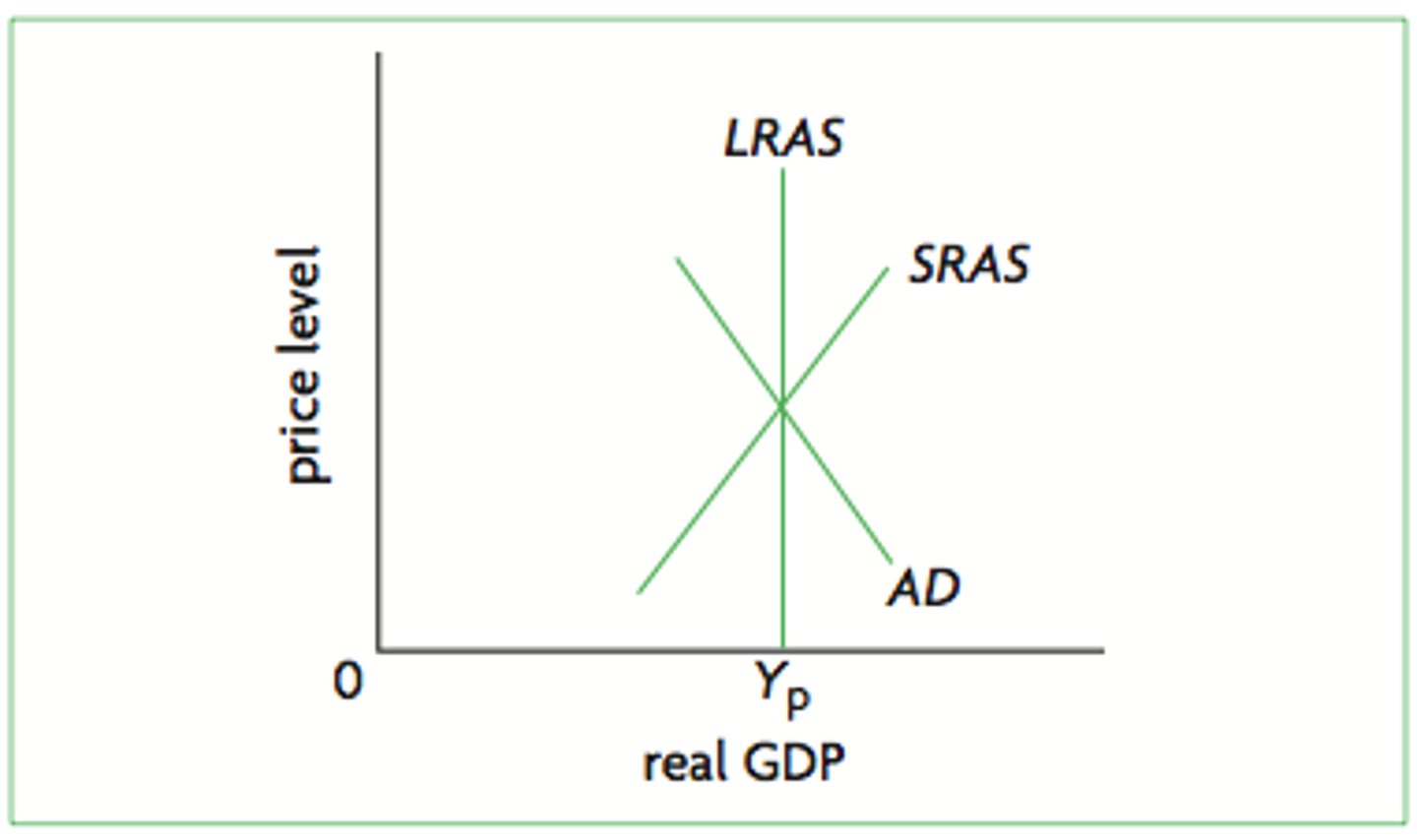
self-correcting mechanism
- classical economists believe that in the long run the economy will always return to its full potential level of output
- all will change is the average price level
automatic adjustment from a deflationary output gap
1. Initial long-run equilibrium is at AP YFE
AD shifts left from AD → AD1, possibly due to the onset of a recession
2. Output falls from YFE → Y1 and price levels fall from AP → AP1
3. Due to the fall in output, firms lay off workers
➜ Unemployed workers are now willing to work for lower wages and this reduces the costs of production which causes the SRAS curve to shift right from SRAS1 → SRAS2
3. A new long-run equilibrium is formed at AP2 YFE
4. The economy is back to the full employment level of output (YFE), but at a lower average price
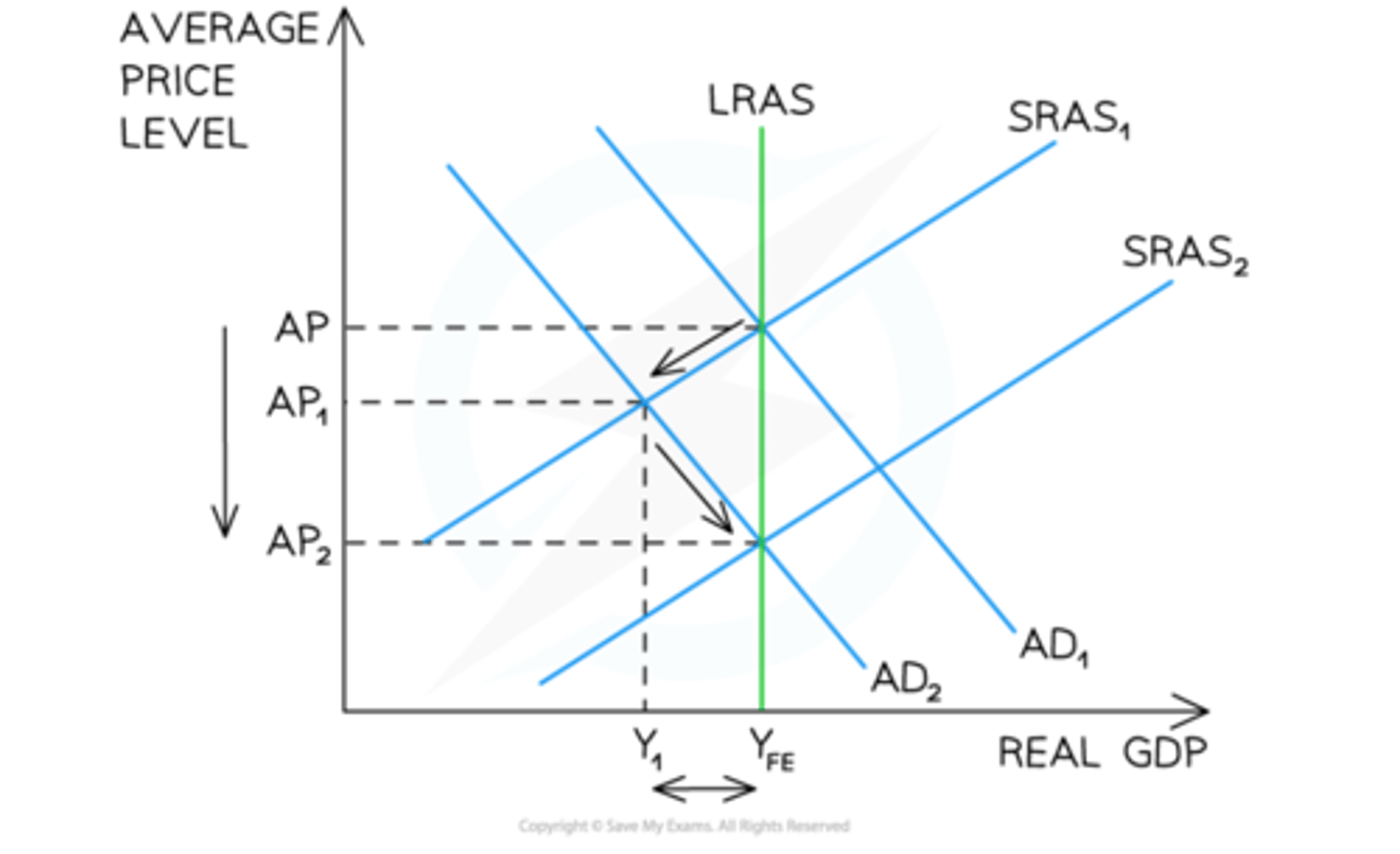
automatic adjustment from an inflationary output gap
1. Initial long-run equilibrium is at AP YFE
2. AD shifts right from AD1 → AD2, possibly due to raid expansion of the money supply
3. Output rises from YFE → Y1 and price levels rise from AP → AP1
4. Due to the increase in average prices (inflation), workers demand higher wages
5. Higher wages increase the costs of production which causes the SRAS curve to shift left from SRAS1 → SRAS2
6. A new long-run equilibrium is formed at AP2 YFE
7. The economy is back to the full employment level of output (YFE), but at a higher average price
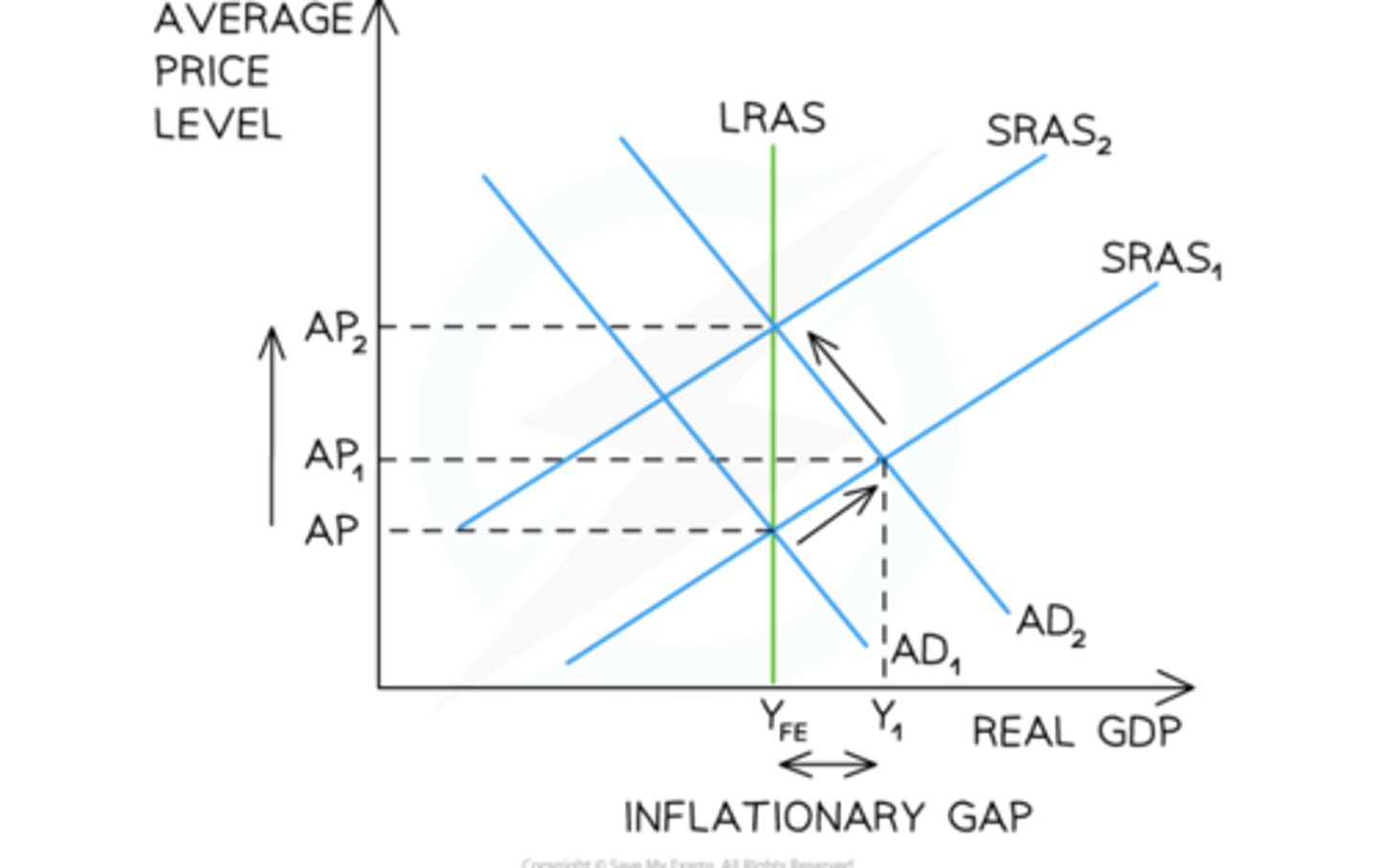
equilibrium in the keynesian model
- believe that the economy can be in long term equilibrium at any level of output
- believe that economy will not always self correct and return to the full employment level of output ➜ stuck below the full employment level
➜ keynesians believe that there is role for the govt. to increase its expenditure so as to shift AD
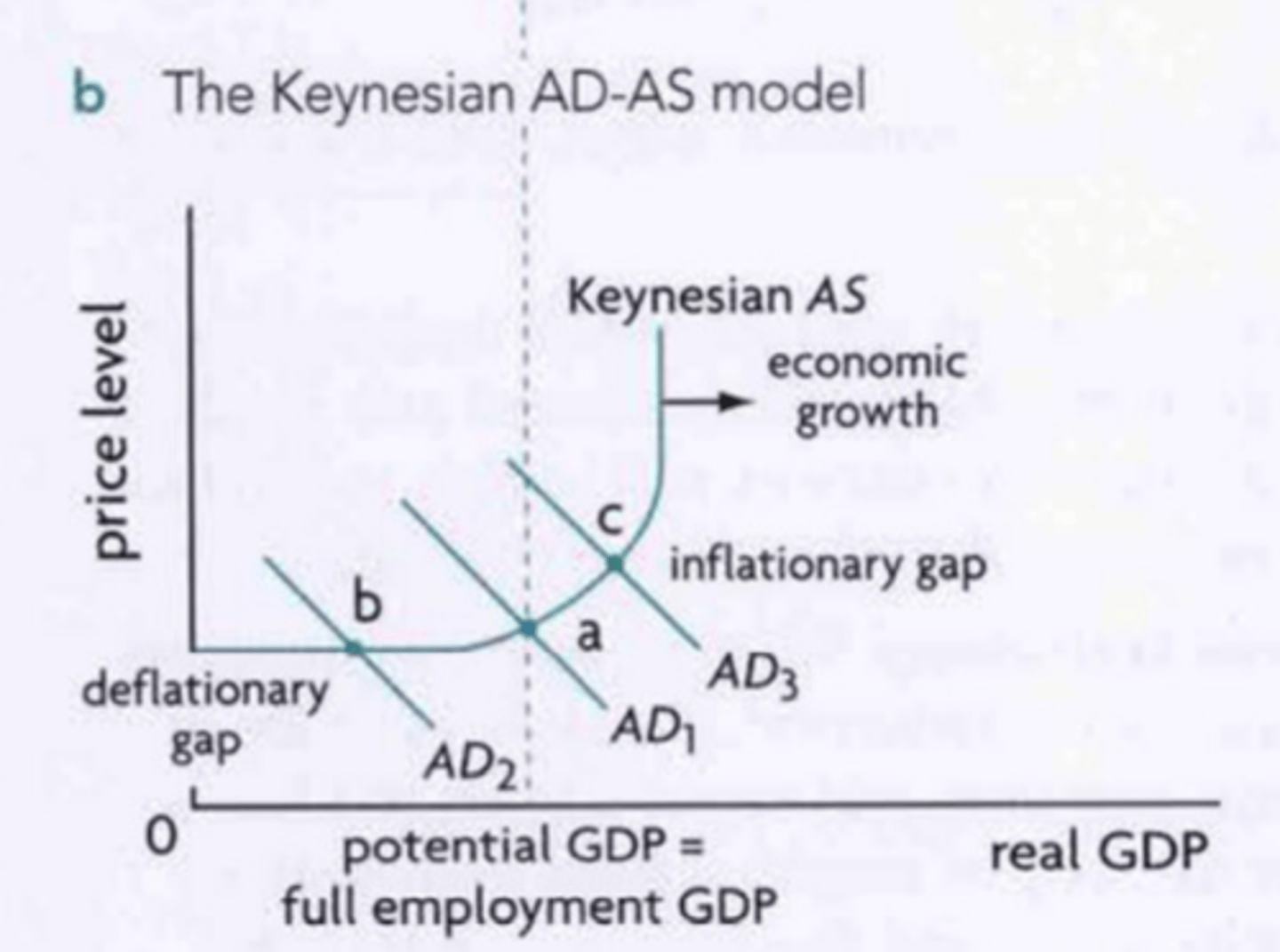
assumptions of classical thinking
1. wages are flexible (can easily rise/fall so as to change costs of production)
2. any deviation from Yfe is temporary (self correct, natural rate of unemployment for an economy)
3. demand-side policies are less effective than supply-side policies in generating economic growth
assumptions of keynesian thinking
1. economy will not self-correct, severe recessionary gaps and the unemployment they cause can be significant and last a long time
2. market will reach a point where self-correction as a result of falling wages is no longer viable as workers will reach a point where they are no longer willing to accept lower wages
3. governments have to intervene to break negative animal spirits, which drive financial decisions during times of uncertainty